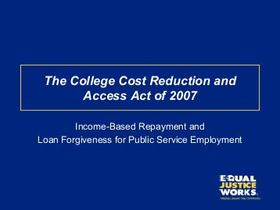High School Diploma vs. GED
The lack of a high school diploma, or its equivalent, precludes a college education and is a substantial barrier to competing successfully in the workforce.
- For students in high school, it is essential to see it through until graduation.
- Those who have already dropped out of high school must obtain a GED to put their best foot forward in the workforce.
- This article compares high school diplomas and GEDs regarding their acceptance by colleges and universities, the business world, and the military.
- We also discuss how homeschooled high school graduates show that they have obtained a high school diploma or its equivalent.
Canva generated this picture of a young man studying for his GED exam.

Regular High School Diplomas
A high school diploma from a traditional brick-and-mortar school that requires attendance in a classroom is the gold standard in demonstrating high school completion and mastery of conventional high school skills.
- A high school diploma signifies that the holder has attended and completed all the courses required by the applicable school district.
- A transcript of the courses taken and grades issued, a common requirement for college and job applications, can be furnished upon request.
Colleges, universities, businesses, and each branch of the United States military accept a regular high school diploma.
- To attend college, a high school diploma or GED is required for admission.
- Students with a high school diploma and demonstrated good grades will often be able to get the financial aid that individuals with a GED cannot get.
In the business world, many entry-level positions require a high school diploma or GED. But again, those with a diploma will often be hired before those with a GED.
- Potential recruits are categorized into three categories or tiers for the military based on their education.
- Most enlistees are in Tier 1, which is for high school diplomas. High school equivalencies are in Tier 2, while non-high school graduates are in Tier 3.
Thus, holders of regular high school diplomas, assuming they pass the physical and other requirements for enlistment, are readily accepted for military service.
This video examines the disadvantages of not having a high school diploma or its equivalence.
Certificate of Completion.
Under the No Child Left Behind Act, a student who has completed the coursework necessary to graduate but has not passed a required exit examination by the end of 12th grade can be issued a Certificate of Completion for attendance.
- It is important to note that this is not a high school diploma or an equivalent to a diploma – it simply certifies attendance at a high school.
- According to the U.S. Department of Education, these certificates are most often awarded to children with an Individualized Education Plan (IEP).
Colleges do not consider Certificates of Completion to meet the necessary minimum requirements for admission. However, holders of Certificates of Completion can go back to high school and complete the requirements for a diploma.
- Upon completion, they can apply to colleges or trade schools or request federal student aid.
- In some jurisdictions, a Certificate of Completion may prevent the holder from taking the GED test. Students who plan to take the GED test should check the local requirements before accepting a certificate of Completion.
While some online high schools can issue valid diplomas, most programs advertising themselves as an online alternative to traditional high schools should be considered suspect.
- Before enrolling in an online high school program, a student should carefully investigate whether colleges and universities, businesses, and the military accept a diploma from that program.
- The military will accept valid online diplomas, but they are classified in Tier 2, GEDs, and other high school equivalencies rather than Tier 1 with traditional high school diplomas.
GED
GED stands variously for General Educational Development, General Education Diploma, or General Equivalency Development.
- As the name implies, the GED was designed as a high school equivalency test for non-graduates.
- According to the GED Testing Service, the GED originated after World War II to allow veterans to complete their high school education and attend college.
- Subsequently, civilians were allowed to take the GED test as well. Throughout the 1950s, 1960s, and 1970s, the GED was taken primarily by individuals seeking to improve their credentials for work purposes.
- Since 1978, the GED test has been revised four times, the most recently launched in January 2014.
Today, the GED provides a second chance for those unable to complete their studies in a traditional high school setting to demonstrate their mastery of high-school-level coursework.
- A person can take the GED test if they meet three criteria.
- First, they cannot have graduated from an accredited high school or received a high school equivalency certificate or diploma.
- Second, they cannot be currently enrolled in a regular high school. Lastly, they must be at least 16 years of age.
The GED test assesses the educational and developmental levels of those who did not graduate high school. The test covers five areas: writing skills, reading (interpreting literature and the arts), mathematics, science, and social studies.
- The questions are all multiple choice except an essay given in the writing skills portion of the test.
- To pass the GED test, a person must attain a minimum score on each test and a minimum combined score on all tests.
- Those who pass the GED test receive a certificate acknowledging that state high school graduation requirements have been met.
The General Educational Development Testing Service administers the GED test in each state, a program of the American Council on Education.
- The test must be taken at an official testing center and cannot be taken online.
- In response to online programs offering GEDs, the American Council on Education warned that a GED cannot be earned online or through correspondence programs.
- The warning further provides that a purported GED earned online may be of "dubious value" and may not be accepted by employers, colleges and universities, or the military.
- Hiring personnel, college admissions officers, and military enlistment personnel are encouraged to verify the authenticity of an individual's GED credential by contacting the jurisdiction that administered the test.
In contrast to online GED test-taking programs, online GED preparation programs can serve as valuable alternatives to attending local preparation courses. Many state-sponsored online preparation programs contain information about regular classroom instruction and authorized testing centers.
How the GED is accepted.
In the academic and business sectors, holders of GEDs have almost the same opportunities as diploma holders, although the edge goes to those who graduated from high school.
- All community colleges and four-year institutions accept GEDs, and most businesses that require high school graduation also take the GED.
- There seems to be, however, a general impression that a high school diploma is a better credential than a GED.
- For example, if two applicants are otherwise equally qualified, the applicant with the high school diploma may be preferred to the holder of a GED.
A GED is regarded as Tier 2 education for military service.
- The armed forces limit the percentage of Tier 2 candidates accepted in any enlistment year.
- In addition, GED holders must score higher on the ASVAB to qualify.
- The status of the GED is based on decades of statistics showing that high school graduates have a much lower attrition rate than other enlistees.
- The percentage of Tier 2 candidates accepted depends upon the particular branch of service.
- The Air Force accepts less than one percent, and the Navy and Marines accept less than ten percent.
There continues to be a stigma associated with the GED.
- The negative connotation seems related to the perception of high school dropouts rather than the GED itself.
- A common assumption may be that students drop out of high school because of behavioral or academic problems.
- In contrast, in practice, a range of circumstances keep students from finishing high school, from personal medical issues to family emergencies or other life circumstances that prevent an otherwise capable student from completing their studies.
- In addition, getting a GED may be associated with cutting corners or a lack of perseverance.
- Most individuals spend less time preparing for the GED test than they would spend attending one year of high school.
Educators assert that GED holders do not benefit from the breadth of subject matter and social interactions that are part of high school education. Nevertheless, those who pass the GED test demonstrate that they have achieved a comparable level of knowledge as those in their state who graduated from high school.
This video explains how to start studying for your GED.
Homeschool Credentials
Homeschooled individuals are finding success in both the academic and business worlds.
- Homeschooled students can prove their graduation from high school in many different ways.
- Some homeschooled students get a GED to have the widely accepted documentation it provides.
- Some homeschoolers purchase preprinted form diplomas, and some make their own.
Some of these homeschool diplomas are eligible for certification by the state education department or local school district. Others attempt to show their achievements by compiling portfolios featuring detailed accounts of their schoolwork and extracurricular activities.
- When a student is homeschooled, an institution or business may be willing to rely on factors other than the high school credential, such as scores on standardized tests and personal interviews.
- There are also online homeschool completion programs that offer diplomas.
- The status of homeschooled enlistees in the military has changed several times.
- Although homeschooled enlistees were classified as Tier 1 before 1998, they were downgraded to Tier 2 because studies showed higher attrition rates for homeschooled students than for high school graduates.
Additional data is being compiled because it is now believed that homeschooled individuals have the same low attrition rates as high school graduates.
This video explains how to earn your GED.
Conclusion
Whether your goal is to enter the workforce, go to college, or enlist in the military, a regular diploma is accepted as proof of graduation from high school.
- If you get anything less than a regular high school diploma, you will be limiting some of your options for the future.
- GEDs may carry less weight than diplomas in the business world and are not accepted at a few colleges and universities.
- However, the GED is an effective high school diploma equivalent when applying for college or jobs.
In contrast, the U.S. armed forces limit the number of enlistees with GEDs and require them to score higher on the ASVAB. Homeschooled students have successfully used various methods to satisfy a high school diploma requirement and are readily accepted into the military along with holders of high school diplomas.
Questions? Contact us on Facebook and Instagram. @communitycollegereview
#HighSchoolDiploma #GEDCertification #EducationOptions #CollegePrep #CareerReadiness














